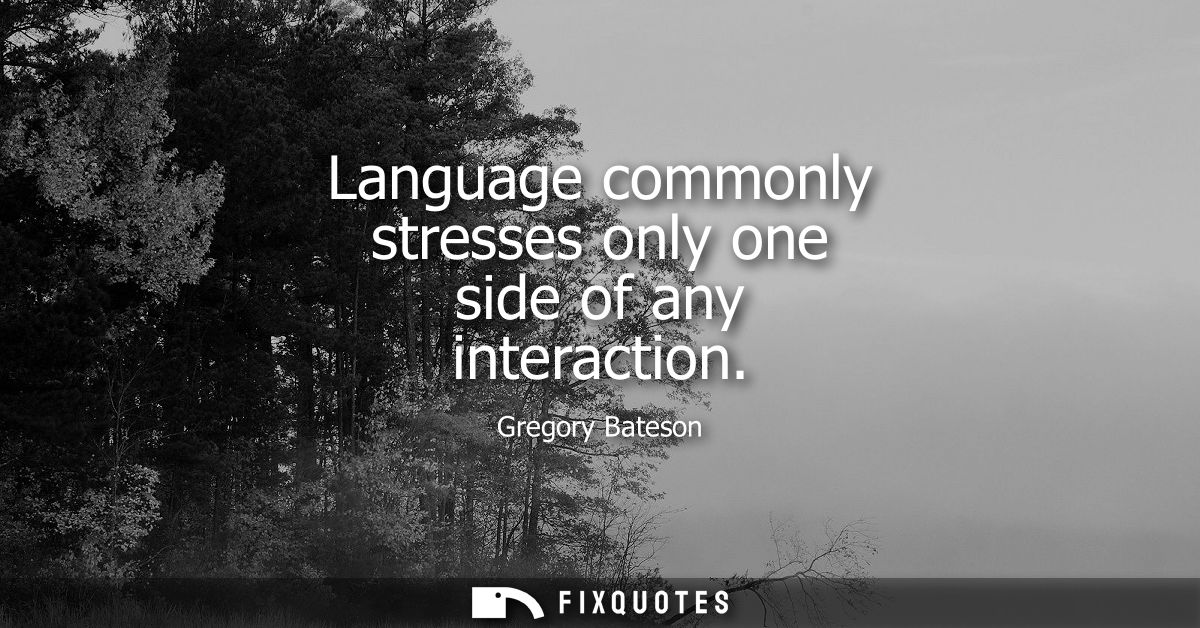"Language commonly stresses only one side of any interaction"
About this Quote
Gregory Bateson's observation that "Language commonly stresses only one side of any interaction" points to the fundamental constraints and predispositions present in human communication. Language, as a tool for expression, tends to emphasize certain elements of truth while unintentionally concealing or disregarding others. This observation can be unpacked by examining the structure and function of language and its effect on human perception and interaction.
Firstly, language is inherently linear and sequential, and when we articulate thoughts or describe events, we typically do so from a specific viewpoint. For instance, when stating an event, we might focus on what happened to us and our feelings and responses, potentially sidelining the point of views and experiences of others involved. This selective representation is formed by personal experiences, cultural backgrounds, and social standards, which affect what is emphasized and what is left unsaid.
Additionally, language carries with it cultural and contextual connotations that often stress specific analyses. Particular words and phrases can set off specific associations, highlighting specific elements of truth while downplaying others. For example, referring to someone as a "hero" stresses their bravery and favorable actions while potentially disregarding any flaws or failures.
Bateson's insight is likewise evident in spoken and non-verbal interactions. The focus on particular words or gestures can modify the characteristics of communication, sometimes inadvertently leading to misunderstandings. This constraint recommends that while language is a powerful tool for connection, it is also an imperfect medium.
In a more comprehensive sense, Bateson's quote highlights the value of being aware of the predispositions inherent in our language use. By recognizing that language often represents just a singular point of view, we are encouraged to embrace a more holistic method to communication. This involves actively listening to others, acknowledging several perspectives, and striving for more balanced and inclusive language. Eventually, appreciating the dual nature of interactions can lead to richer, more nuanced communication, promoting much better understanding and cooperation among individuals.
About the Author

